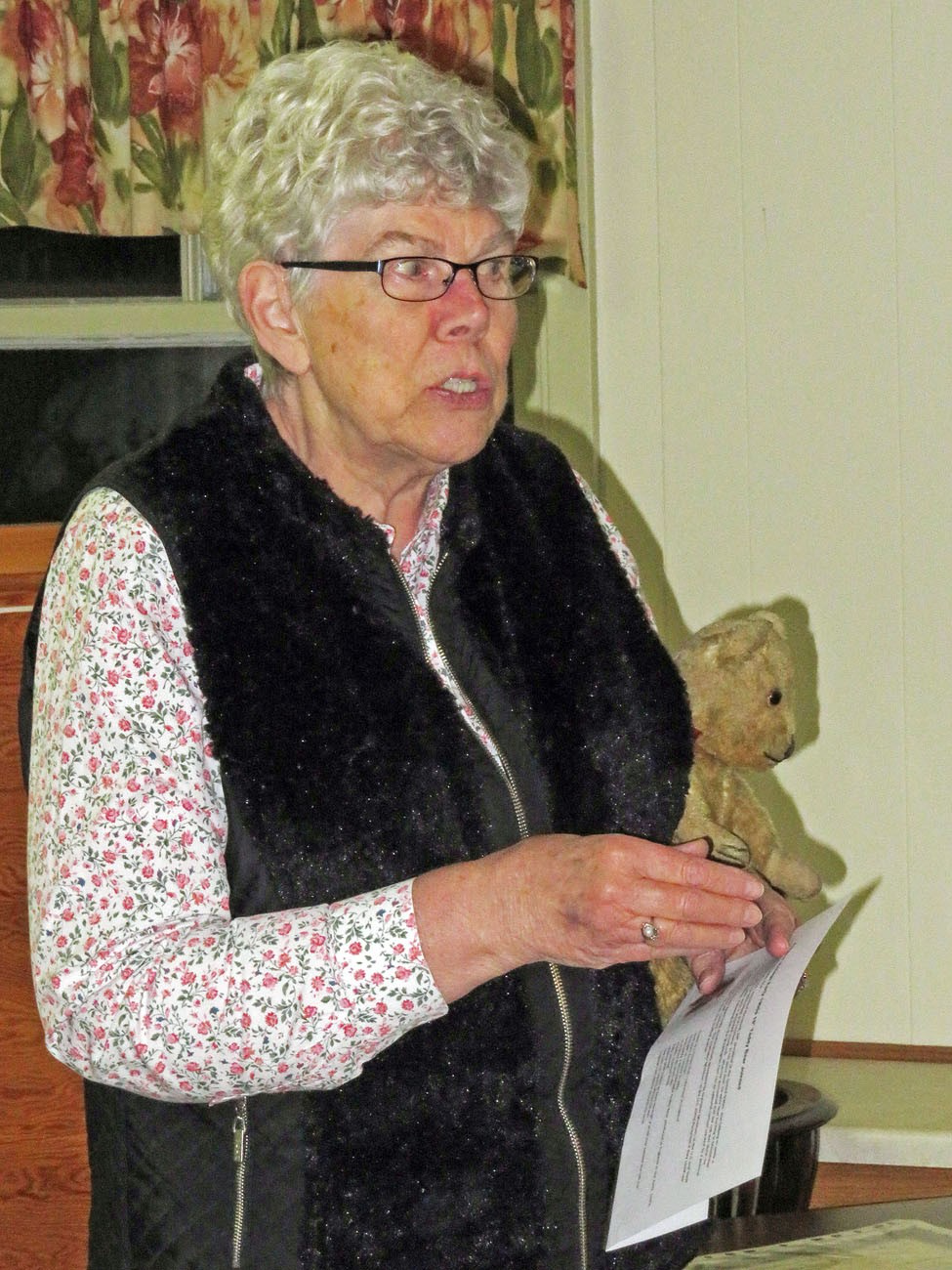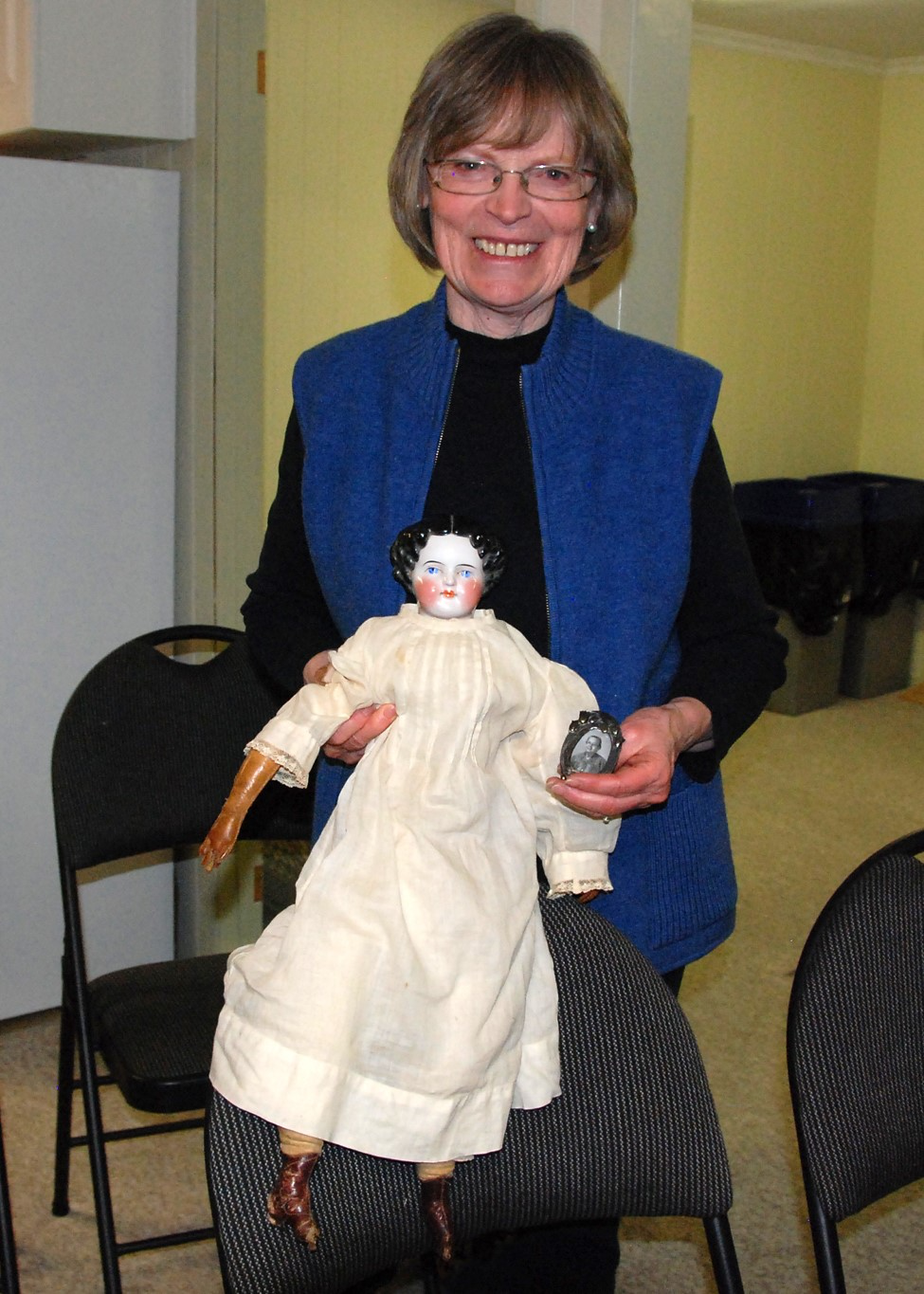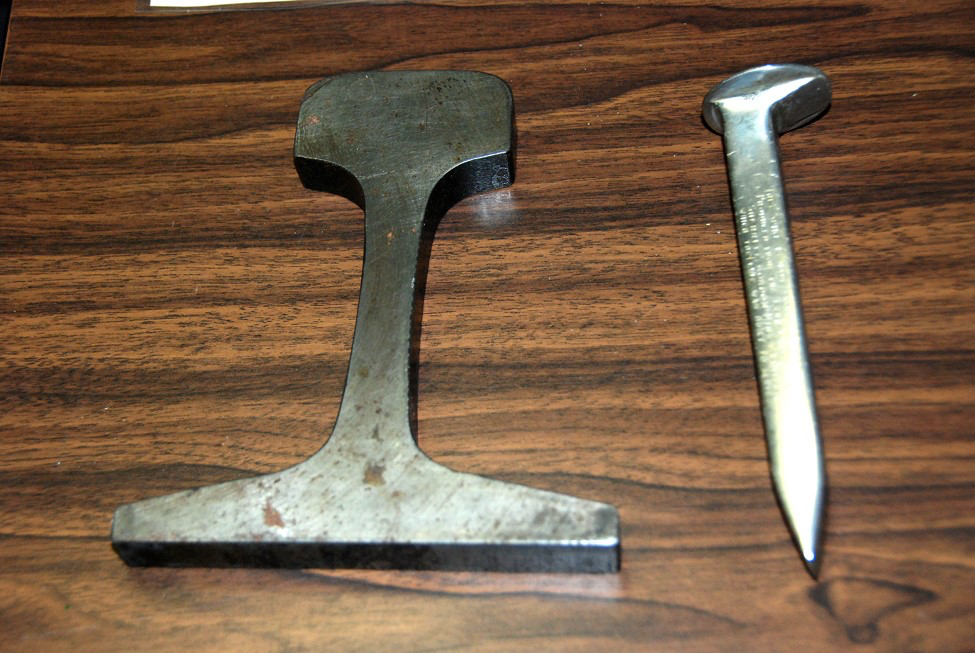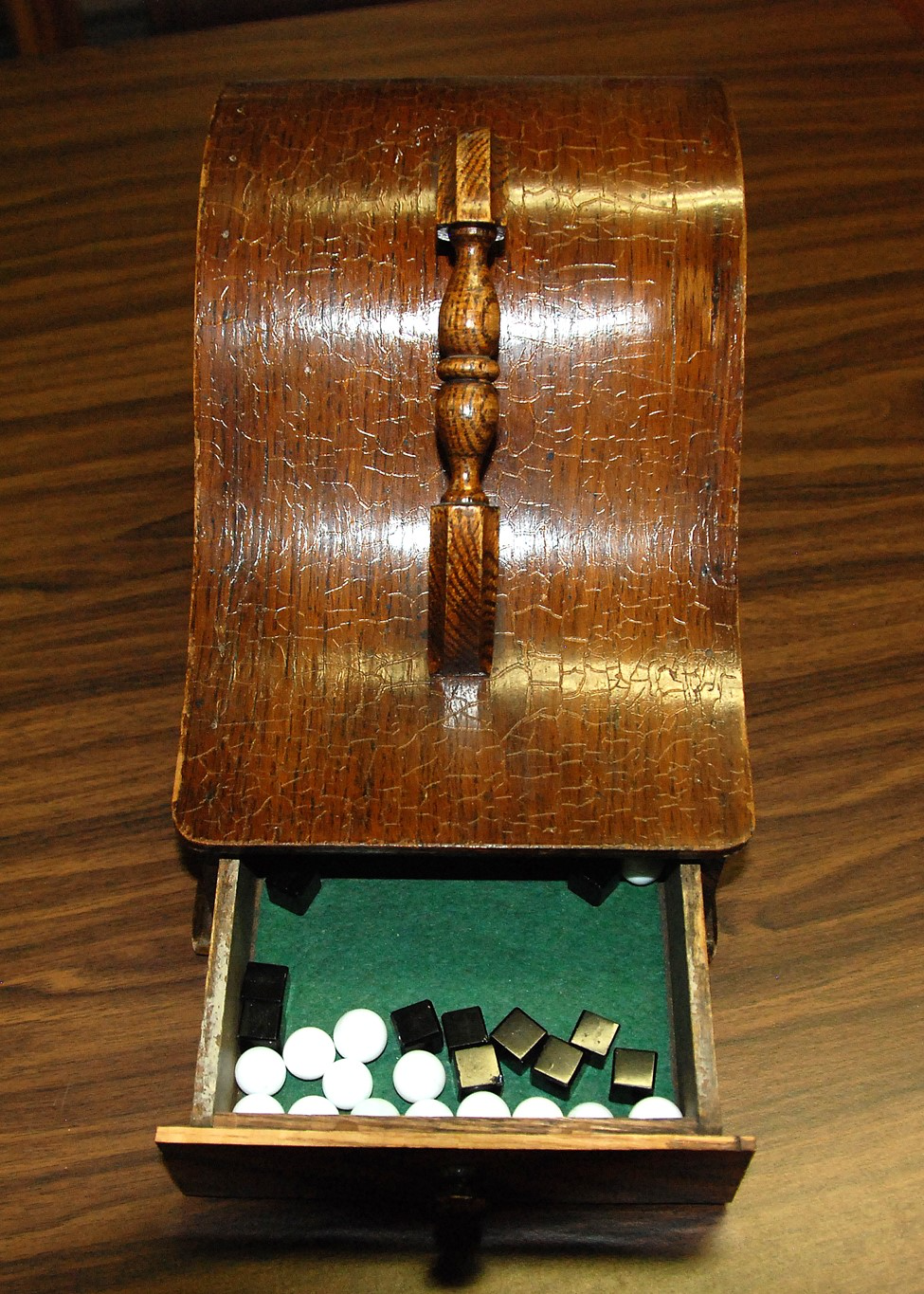RTHS Bring and Brag 2018
Article by Maureen McPhee; Photos by Owen Cooke and Maureen McPhee. January 2018.
The January 2018 RTHS meeting once again featured the ever popular annual Bring and Brag event, where attendees bring an item of historic interest, show it to the audience and describe its significance. This year there were ten presenters who shared their enthusiasm for an intriguing selection of artifacts.
Owen Cooke passed around a tiny porcelain frog that he acquired at the Jisso-in Temple, which is in the forested foothills of mountains located outside the city of Kyoto in Japan. The frog is the mascot of this Buddhist temple and is believed to bring good luck. The porcelain figure is based upon forest green tree frogs in the area that come out of the forest in the spring to visit the temple's water gardens. The frogs lay their eggs on vegetation just above the water and the tadpoles mature in the water, before returning to the forest.
Ronald Cameron brought a reproduction of the 1879 H. Belden and Company Illustrated Historical Atlas of the County of Carleton. He pointed out key features of the atlas, such as its lists of communities, some of which still exist and others that do not. He commented that the atlas is very useful for looking up the properties owned by families at that time. The book is of interest to him since for many years, he and his family lived on a property that was surrounded by lands that had been owned by his wife’s ancestors. Now the Camerons have moved to a farm that was owned by Ron's ancestors, commencing in 1853.
Scott Cameron shared with the audience a very large bound copy of the 1903 Illustrated London News of the London Times. He stated that the London Times, which began as the Daily Universal Register in 1785, was the first newspaper to use the word “times” in relation to a city name. Scott encouraged attendees to look through the volume following the presentations and noted that he had placed bookmarks for two particularly interesting articles, one on the Balkans.
Jane Anderson brought a selection of old food containers, including a frosted-glass Dundee marmalade jar. The original jars were crockery and an audience member noted that one of these Dundee crocks holds men's shaving equipment at Manotick's Dickinson House Museum. Jane read out an entertaining story of how Dundee became the home of bitter orange marmalade. She also displayed two old tins, including a 1979 Maxwell House coffee tin, which looks much older, and a large tin for “Heinz's Pearls.” Jane said it was a mystery as to what it would have contained. A suggestion from the audience was that it might have been tapioca.
Brian Earl presented two railway-related objects. The first was a duplicate of the last spike driven in 1953 for the Sheridon-Lynn Lake Line. It was made from the first nickel produced at Lynn Lake by the Sherritt Gordon Limited mine. Brian's father was on the survey crew for the railway line. The second object was a large slice of a rail taken from the last run of rail produced in Canada by Sydney Steel Corporation of Cape Breton Island. Brian also brought a letter concerning a rather mysterious patent that was issued to an individual on his great-grandmother's side of the family. The patent was for an improvement to non-refillable bottles.
Dorothy Gray displayed and passed around an 86-yearold teddy bear, which is stuffed with kapok tree fibre, is fully jointed and has the original bow at its neck. The bear was found in a house that Dorothy inherited in England. Dorothy told the story of how Teddy Roosevelt's request for the mercy killing of a cub found during a bear hunt in which he was participating led to a Washington Post cartoon and eventually to the production of the fluffy stuffed toys. An American company asked Teddy Roosevelt if they could use his name for their bears and the teddy bear came into being.
Jan Willis showed us a selection of items that she found in the process of cleaning out her mother's house. The document which Jan described as her pride and joy is her mother's immigration identification card. Her mother arrived at Halifax on the ship the Duchess of York on January 27, 1934. Also included in the collection were an August 7, 2004 Ottawa Citizen article on immigration through Halifax, 1967 Centennial napkins from the Chateau Laurier Hotel, and certificates that her brother received at an October 18, 1952 Better Baby Show at the Legion.
Allan Haan showed us a wooden artifact that has a small drawer at the front and comes with associated round white balls and black cubes. He demonstrated how these can be inserted into the back of the drawer though a large opening at the rear of the object. Allan speculated that the object may have been a ballot box for secret voting.
Ruth Wright brought a squared-off bottle made of black glass with the words “Blankenheym and Nolet” built into the glass on one side. She had found the bottle when packing up her father's farm property. Through research, she discovered that it is a gin bottle from the Blankenheym and Nolet company thst has operated in The Netherlands for 325 years.
Susan McKellar rounded out the evening by presenting her grandmother's doll. The doll has a china head and leather feet and hands. It was accompanied by a small framed photograph of Susan's grandmother, Letitia Mary Corneil Johnson, who was from southwestern Ontario but attended teacher’s college in Ottawa. Susan also read what she could decipher from an August 15, 1832 letter written by an ancestor in Scotland who was a shoemaker.





